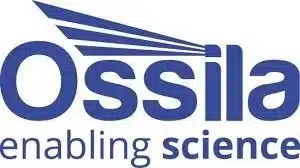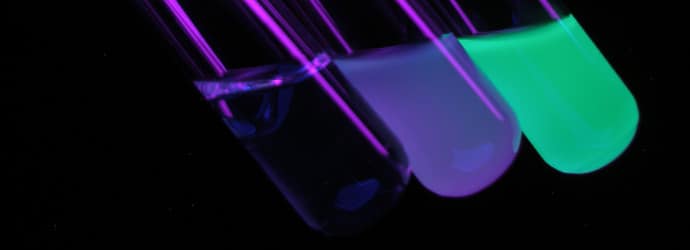Sample analysis is at the heart of biological research, driving discoveries in genetics, proteomics, and drug development. Yet, there’s one technique that is often overlooked, despite already being in many of our labs.
If you’ve ever used a plate reader, you’ve already performed optical spectroscopy—an analytical technique that uses light to assess samples. But its applications go far beyond well-plate readings, from determining RNA purity in PCR experiments to quickly characterising complex proteins.
In this post we’ll take a look at the principles of optical spectroscopy and explore the many ways that it is being put to use in the bio industry. Let’s get started.
What is Optical Spectroscopy?
Optical spectroscopy is an analytical technique used in many branches of science. It uses light to assess samples to learn important information about their structure and properties.
Enjoying this article? Get hard-won lab wisdom like this delivered to your inbox 3x a week.

Join over 65,000 fellow researchers saving time, reducing stress, and seeing their experiments succeed. Unsubscribe anytime.
Next issue goes out tomorrow; don’t miss it.
To perform optical spectroscopy, a light source is shone at a sample or a material, and the way that the light interacts with the sample is measured by a spectrometer.
Though many forms of light can be used, it is most common for light from the UVA and visible regions of the electromagnetic spectrum to be used. In this case, the technique is also referred to as UV-Vis spectrometry, and the light that is used spans wavelengths from 190 to 750 nanometres.
The optical spectrometer will output the measured light intensity as a function of wavelength, and this data can be analysed in many ways.
There are different types of optical spectroscopy, in which different aspects of the way that light interacts with the material is assessed.
- Transmission spectroscopy: Measures how much light is able to pass through a material at specific wavelengths to determine its opaqueness.
- Absorbance spectroscopy: Works on the principle of excitation and measures the attenuation of light at different wavelengths.
- Photoluminescence spectroscopy: Measures how fluorescent a material is at different wavelengths by detecting the light that is emitted by a material.
- Diffuse reflectivity spectroscopy: Assess the way that light scatters off a sample or surface.
The light source that is used within optical spectroscopy will vary depending on the type of measurement that is being taken. Typically, a monochromatic source that emits light at a single wavelength is used to excite materials, for example for photoluminescence spectroscopy.
On the other hand, a broadband source that simultaneously contains a spectrum of light at many different wavelengths is used for absorption, transmission, and reflection measurements.
Uses of Optical Spectroscopy in the Bio Industry
Optical spectroscopy is often associated with materials science and engineering, where it is used as an inexpensive tool that can quickly gather a lot of information about a material’s structure. However, its applications within the biological field are also broad and varied, thanks to the non-destructive aspect of this technique.
Pharmaceutical Analysis
UV-Vis spectroscopy is an important tool in pharmaceutical analysis as it provides qualitative analysis of organic compounds. By analysing a small quantity of a compound, a lot of information can be obtained:
- Chemical identification: Absorbance spectrometry is particularly useful for identifying the chemical composition of a compound. A UV-Vis spectrometer can be used to produce an absorbance spectrum. By analysing the location and intensity of peaks within the spectrum, the chemical structure of the compound can be identified. This can be used to determine what an unknown compound is, but it is also useful for determining whether essential compounds are present within a manufactured product.
- Purity: Within pharmaceuticals, purity is a top priority. A UV-Vis spectrometer can be used to assess the purity and quality of a compound by checking how much absorbance occurs at wavelengths of light that correlate to known contaminants.
- Dissolution Testing: Optical spectrometry can be used to analyse the way that a compound dissolves in a solution. This provides information that is needed to determine the oral concentration dosages of compounds.
Within the pharmaceutical industry, optical spectroscopy is also used for regulatory adherence. The data that is generated by a spectrometer can be used to validate the quality and composition of a compound in order to get approval from the Food and Drug Administration (FDA).
RNA Extraction
One of the most common applications of optical spectroscopy is during the RNA extraction process. Absorbance spectroscopy can be used to assess both how much RNA has been extracted as well as how pure it is.
Sample purity is particularly important as several reagents are used in the extraction process that can impact the accuracy of later experimental stages if they are not correctly removed.
When used in an optical spectrometer, RNA absorbs light that has a wavelength of 260nm. However, the absorbance peaks of the compounds within the extraction process are different.
For example, proteins absorb light at a wavelength of 280 nm, whereas TRIzol and EDTA absorb at 230 nm. For that reason, the ratios between the wavelengths can be used to assess sample purity. For RNA, a value of around 2.0 is generally accepted as pure for both the 260:280 and 230:260 ratios.
The purity of DNA can be analysed in the same way, though the accepted 260:280 ratio is slightly shifted to 1.8 due to the presence of the nucleotide Thymine.
Bacterial Culture
Transmission optical spectroscopy can be used to monitor cell and bacterial growth. It is an indirect technique that estimates the total number of cells (both alive and dead) via light.
The more cells that there are within a solution, the more turbid, or cloudy, it will appear. This turbidity can be measured using an optical spectrometer by shining a light at the sample and measuring how much light is able to pass through.
The turbidity is directly proportional to the number of cells, hence the measurements can be used to quantify the cell count and monitor growth over time.
Medical Diagnosis
Several forms of optical spectroscopy can be used for diagnosing medical conditions because light interactions can provide information on the properties of various tissues.
In particular, optical spectroscopy can be used to detect tissue abnormalities to diagnose cancers. Cancerous tissue has different morphological and molecular properties from healthy tissue, and these differences can be identified using optical spectroscopy.
Additionally, UV-Vis spectroscopy can be used to quantify predictive biomarkers for the diagnosis and treatment of cancers. For example, it can be used to measure oxygen saturation in haemoglobin and detect other changes in blood composition based on the way that light is absorbed.
More recently, there has been increasing interest in the development of in vivo uses of optical spectroscopy. Here, highly localised light can be delivered to a patient using optical fibres to help clinicians make diagnoses without the need for invasive biopsies.
These systems can be integrated into existing endoscopes, meaning that in the future, we could see these ‘optical biopsies’ becoming commonplace.
Advantages and Limitations of Optical Spectroscopy
Strengths
Optical spectroscopy is a versatile analytical technique that has many applications.
- Non-destructive: Optical spectroscopy does not damage or destroy samples, meaning that they can be reused in further analysis steps.
- Simple: An optical spectroscopy setup is simple, consisting of a light source, the sample being analysed, and a detector (spectrometer). Little training is required to carry out optical spectroscopy, and the same set-up can be used to analyse a range of materials and samples.
- Inexpensive: Compared to other analytical tools, optical spectroscopy is inexpensive to purchase and operate making it accessible for many laboratories.
- Compact: Compared to other analytical instruments that may require an entire benchtop or even their own room, optical spectrometers are often compact devices that can be stored in cupboards and brought out as needed. This is particularly useful in a lab environment where it can be difficult to find space for new equipment.
Limitations
As with all analytical techniques, optical spectroscopy has its limitations and is not always the most suitable analytical technique. Quite often, the limitations and sources of error surrounding optical spectroscopy come from sample preparation and equipment setup:
- Light scattering: Can be caused by solid particles and bubbles that are suspended in liquid samples. These cause the light to scatter, which can cause measurement errors and irreproducible results.
- Sample alignment: The orientation and position of the sample within the spectrometry setup is very important and must be consistent for every measurement taken. If the cuvette that holds the sample is misaligned with either the light source or the spectrometer, it might cause inaccurate results.
- Interference: Sometimes, a sample may contain multiple compounds that have overlapping spectra. If a compound is unknown, then this may not be obvious when looking at the absorbance spectra. Where possible, chemical species should be separated and examined individually to prevent this interference.
- Stray light: Optical spectroscopy is the measurement of light, which means that any stray light that reaches the spectrometer could contribute to the data that is output. This light could come from improperly fitted compartments in the instrument or from the surroundings.
Optical Spectroscopy for Bio Applications Summarized
As we have seen, optical spectroscopy is a versatile technique that is already being used in multiple different areas of the biological industry, from drug analysis to cancer diagnosis.
Research is continuously being done to develop new applications of optical spectroscopy and to reduce the errors that might occur in our current setups.
You made it to the end—nice work! If you’re the kind of scientist who likes figuring things out without wasting half a day on trial and error, you’ll love our newsletter. Get 3 quick reads a week, packed with hard-won lab wisdom. Join FREE here.







